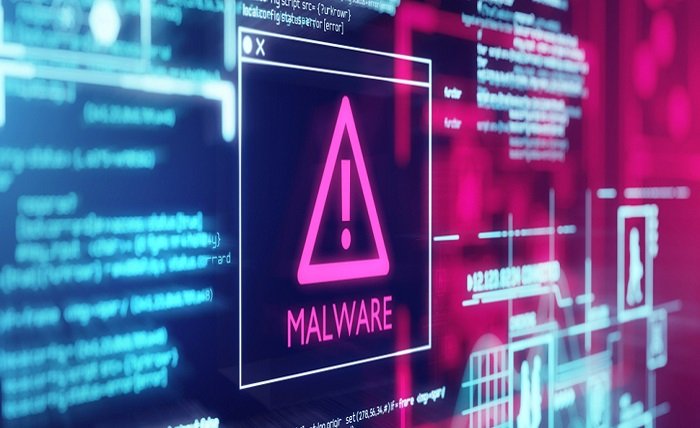Navigating the Intricacies of Malware: Strategies and Insights for Cybersecurity Enthusiasts

As internet usage soars, understanding different types of malware and adopting effective defenses becomes crucial for safeguarding sensitive information. As users become more interconnected, staying updated with the latest cybersecurity practices is more pressing than ever. Modern innovations, such as Internet of Things (IoT) devices, expand the attack surface, emphasizing the importance of a robust cybersecurity strategy.
This article explores various aspects of malware, ranging from its common forms to prevention strategies and real-world examples of attacks. By delving into these topics, cybersecurity enthusiasts can gain a clearer perspective on fortifying their defenses against potential breaches. This knowledge is vital for IT professionals and everyone who interacts with technology daily. Understanding the complexities of malware allows for better preparation and mitigation, helping individuals recognize potential threats before they become significant problems.
Table of Contents
- Introduction to Malware
- Common Types of Malware
- Real-World Examples of Malware Attacks
- The Role of Antivirus Software
- The Importance of Cyber Hygiene Practices
- Cybersecurity Trends and Predictions
- Leveraging Public Resources and Knowledge for Cyber Defense
- Conclusion: Moving Forward in a Malware-Laden World
Introduction to Malware
Malware, a contraction of “malicious software,” is designed to disrupt, damage, or gain unauthorized access to computer systems. Its origins trace back to the early days of personal computing when threats were rudimentary and localized. In today’s digital landscape, threats from malicious attacks continue to evolve, posing significant challenges for individuals and organizations. However, it has since evolved into a sophisticated web of threats capable of targeting individuals up to large corporations. Attacks have become more targeted, financially motivated, and complex, with adversaries often organized and well-funded. In recent years, state-sponsored attacks have highlighted the political dimensions of malware, illustrating its use as a tool for international espionage and disruption.
Common Types of Malware
Ransomware
Among the most notorious forms of malware, ransomware encrypts a user’s data and demands payment to restore access. This type of attack has grown increasingly common, with high-profile cases causing widespread disruption. The damage isn’t just financial; ransomware can erode trust, disrupt operations, and lead to significant data losses that affect reputations and market positions. Beyond immediate financial implications, there are often legal and regulatory ramifications to consider, particularly in industries such as healthcare and finance, where data privacy laws are stringent.
Trojan Horses
Disguised as benign applications, Trojan horses create hidden backdoors for attackers to infiltrate systems and steal sensitive information without immediate detection. They are often spread through email attachments or infected websites, tricking users into downloading and executing them unknowingly. The implications of such breaches can be vast, including unauthorized access to sensitive corporate data or personal information, leading to identity theft and financial fraud.
Viruses and Worms
While similar in function, viruses attach themselves to legitimate files and programs, needing human action to spread, whereas worms can replicate themselves to spread independently throughout networks, causing widespread damage. This ability to propagate without user interaction makes worms particularly dangerous and disruptive. The proliferation of worms can lead to network congestion and degradation of services, impacting businesses and consumers alike. Recovery often requires significant time and resources to restore normal operations.
Real-World Examples of Malware Attacks
To understand the potential impact of malware, looking at real-world incidents is vital. For instance, the WannaCry ransomware attack in 2017 affected hundreds of thousands of computers globally, exploiting security vulnerabilities and prompting urgent calls for enhanced cybersecurity measures across sectors. The attack showcased the ripple effect a single malware could have on healthcare, finance, and public service sectors, disrupting day-to-day operations and stressing the inadequate preparedness of many organizations.
Understanding these cybersecurity incidents helps illuminate the importance of proactive measures and preparation to mitigate such risks. They highlight gaps in digital defenses and stress the need for continuous monitoring and updating of security protocols. Organizations need to prioritize incident response planning, ensuring they can swiftly and effectively counteract any breaches.
The Role of Antivirus Software
Antivirus software is a critical line of defense against malware, using signature-based detection and heuristics to identify potential threats. Despite its limitations, such as the inability to detect new, complex malware strains immediately, antivirus solutions are essential to any comprehensive security strategy. The continual evolution of these systems, incorporating machine learning and behavioral analysis, provides improved defenses, yet users must understand that no single solution offers full-proof protection. Organizations are increasingly turning to integrated security suites encompassing antivirus software, firewalls, intrusion detection systems, and other protective measures.
The Importance of Cyber Hygiene Practices
Adopting cyber hygiene practices is crucial in reducing vulnerability to malware. Essential practices include:
- Regular Software Updates:Ensuring systems have the latest patches to close security loopholes. Outdated software is a common entry point for attackers.
- Strong Password Management:Utilizing complex passwords and enabling multi-factor authentication for additional protection. These measures prevent unauthorized access even if passwords are compromised.
- User Education:Training individuals on recognizing phishing attempts and safeguarding shared devices. Awareness is a powerful tool against social engineering tactics that deliver malware.
- Data Backup:Routine backup of essential data helps mitigate the impact of ransomware and other malware that might result in data loss.
Cybersecurity Trends and Predictions
As technology advances, so do methods for combating malware. Employing AI and machine learning enhances detection capabilities, allowing for more effective identification and neutralization of threats. These technologies help security systems to predict and react to malware behavior in real time, offering a dynamic and adaptive response. The increasing use of cloud-based security solutions also represents a significant trend, enabling businesses to scale their defenses in line with their growth.
Staying informed on the current cybersecurity landscape and anticipating future trends provides a strategic advantage in preparing for emerging threats. Technological integration and collaboration across industries will create a unified defense strategy against evolving cyber threats. Cross-sector partnerships can facilitate threat intelligence sharing, leading to more informed and timely attack responses.
Leveraging Public Resources and Knowledge for Cyber Defense
Public resources, such as government advisories and community forums, can enhance knowledge about threat landscapes and defense strategies. Open forums and reports allow for information sharing, pivotal for timely threat mitigation. Sharing insights within the cybersecurity community cultivates a collective effort to strengthen defenses against malware and other cyber threats, paving the way for a more secure digital future. Engaging in cyber drills and industry-wide threat assessments can further enhance preparedness.
Conclusion: Moving Forward in a Malware-Laden World
While malware remains a formidable adversary in the digital age, understanding its mechanisms and employing proactive strategies can mitigate its impact. The fusion of awareness, technology, and community-wide vigilance constructs a fortified barrier against potential threats. By staying informed and investing in robust cybersecurity measures, individuals and organizations can navigate confidently in this challenging terrain. The shared responsibility across all digital users will ultimately lead to a safer digital landscape. Collective effort in addressing security challenges and adopting comprehensive protective measures remains pivotal to future resilience.



